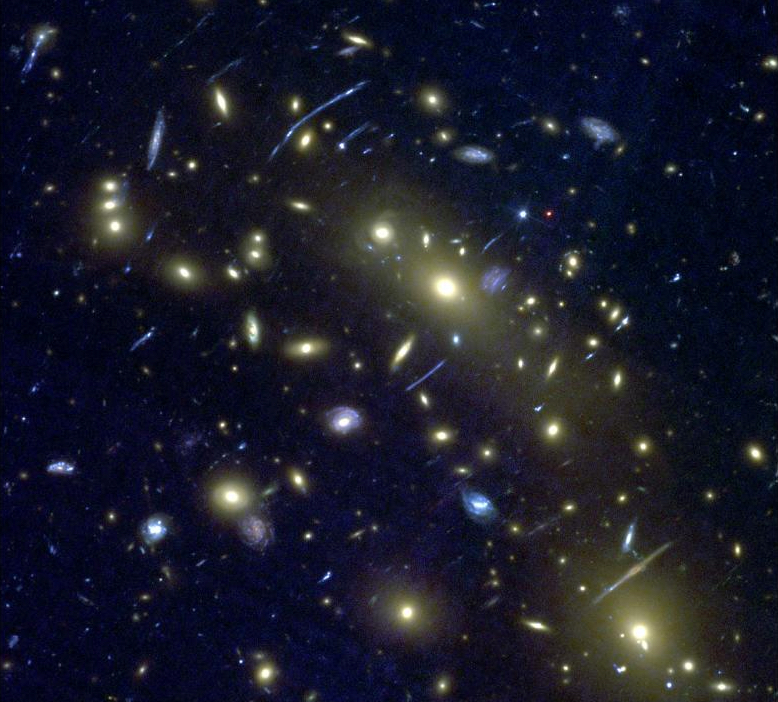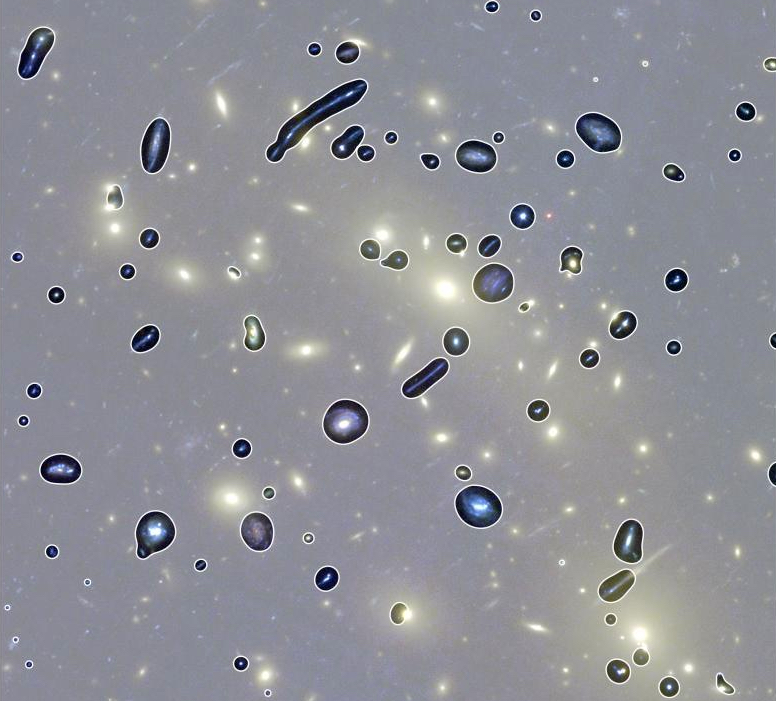AI algorithm learns to ‘see’ features in galaxy images
July 8, 2015

Hubble Space Telescope image of the cluster of galaxies MACS0416.1-2403, one of the Hubble “Frontier Fields” images. Bright yellow “elliptical” galaxies can be seen, surrounded by numerous blue spiral and amorphous (star-forming) galaxies. This image forms the test data that the machine learning algorithm is applied to, having not previously “seen” the image. (credit: NASA/ESA/J. Geach/A. Hocking)
A team of astronomers and computer scientists at the University of Hertfordshire have taught a machine to “see” astronomical images, using data from the Hubble Space Telescope Frontier Fields set of images of distant clusters of galaxies that contain several different types of galaxies.
The technique, which uses a form of AI called unsupervised machine learning, allows galaxies to be automatically classified at high speed, something previously done by thousands of human volunteers in projects like Galaxy Zoo.

Image highlighting parts of the MACS0416.1-2403 cluster image that the algorithm has identified as “star-forming” galaxies (credit: NASA/ESA/J. Geach/A. Hocking)
“We have not told the machine what to look for in the images, but instead taught it how to ‘see,'” said graduate student Alex Hocking.
“Our aim is to deploy this tool on the next generation of giant imaging surveys where no human, or even group of humans, could closely inspect every piece of data. But this algorithm has a huge number of applications far beyond astronomy, and investigating these applications will be our next step,” said University of Hertfordshire Royal Society University Research Fellow James Geach, PhD.
The scientists are now looking for collaborators to make use of the technique in applications like medicine, where it could for example help doctors to spot tumors, and in security, to find suspicious items in airport scans.